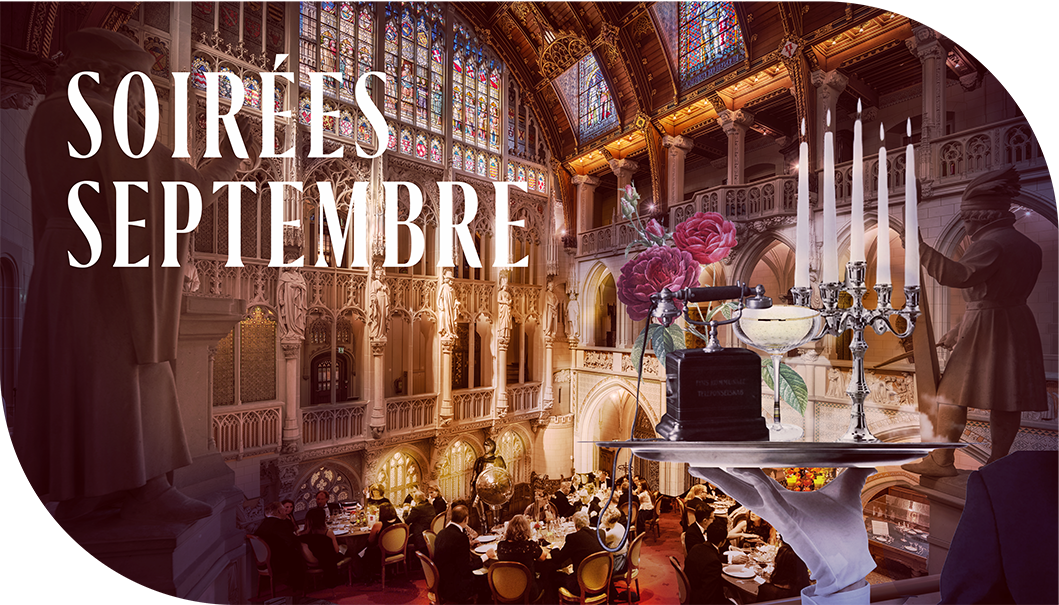Bals Masqué during the September tradition
Between roughly 1900 and 1950, guests at De Haar were expected to appear at dinner in white tie.Starting in the 1960s, Black tie became the standard for September dinners. On Saturday nights, a dress code applied within which the guests could afford a little more freedom: then the Baron and Baroness often organized Bals Masqué and the guests wore the most beautiful costumes.
Ball Masquerade
On Saturday evenings, a ball masqué was traditionally held in the Main Hall. Bals Masqué were first held in fifteenth-century Italy and were especially popular in Venice. These costumed festivities, where guests dressed unrecognizably, provided a great opportunity to escape the social restrictions that dominated daily life. Guests were allowed to keep their identities hidden and did not have to behave according to prevailing conventions. They were often merry and noisy parties where excessive eating, drinking, flirting, dancing and gambling took place. Not for nothing were they popularly called a "carnival behind closed doors.
Meeting Baron Etienne and Baroness Hélène
Costumed balls were also very popular at De Haar! In the first decades it was a feast for the eyes. The guests, entirely in the nineteenth-century tradition, wore the most beautiful costumes. Baroness Hélène liked to dress up as a man in a dress suit, complete with starched skirt whites and stick-on mustache!
Did you know that Baron Etienne and Baroness Hélène met in Paris at a Bal Masqué on the dance floor?
In the last decades of the twentieth century, the masquerade ball no longer had the cachet of the present day. Indeed, it had now become customary to devise an outfit using what one could find in and around the castle.

